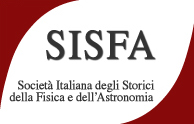Speaker
Description
Abbé Nollet is known as the first professor of experimental physics in France in the 18th century. However, at that time, some technical school provided already an excellent technical education
But physics teaching in general education really took shape after the revolution and with the creation of the "lycées" by Napoleon. Curricula were then published, along with lists of equipment to be used in the "lycées". This administrative organization still exists in France.
The "Ecole Normale de l'an III" was responsible, during four months, for training teachers for these new establishments. Professors were the greatest scientists of that time. The mineralogist René-Just Haüy was commissioned to write the first physics textbook.
During this period all the "grandes écoles" were created. At the same time, in 1808, the "baccalauréat" and the "agrégation" were introduced. However, it was not only at the middle of the 19th century that a scientific curriculum was created, separated from that of the humanities.
Also, during this period, the scientific "baccalaureat" becomes compulsory for medical studies. Nevertheless, it was not until 1880 that Camille Sée created the "lycées "for girls.
With the development of printing, many of the teachers published their lectures in textbooks for their students. Together with the official texts, these books and the collections of apparatus preserved in historical high schools provide us with information on the physics taught in the 19th century.

